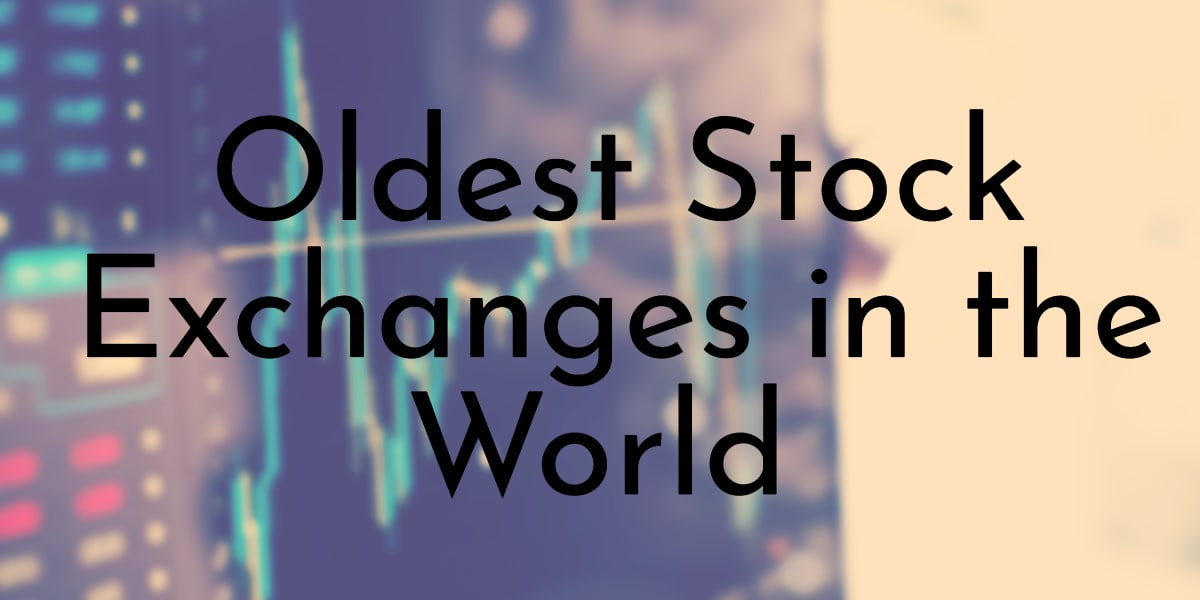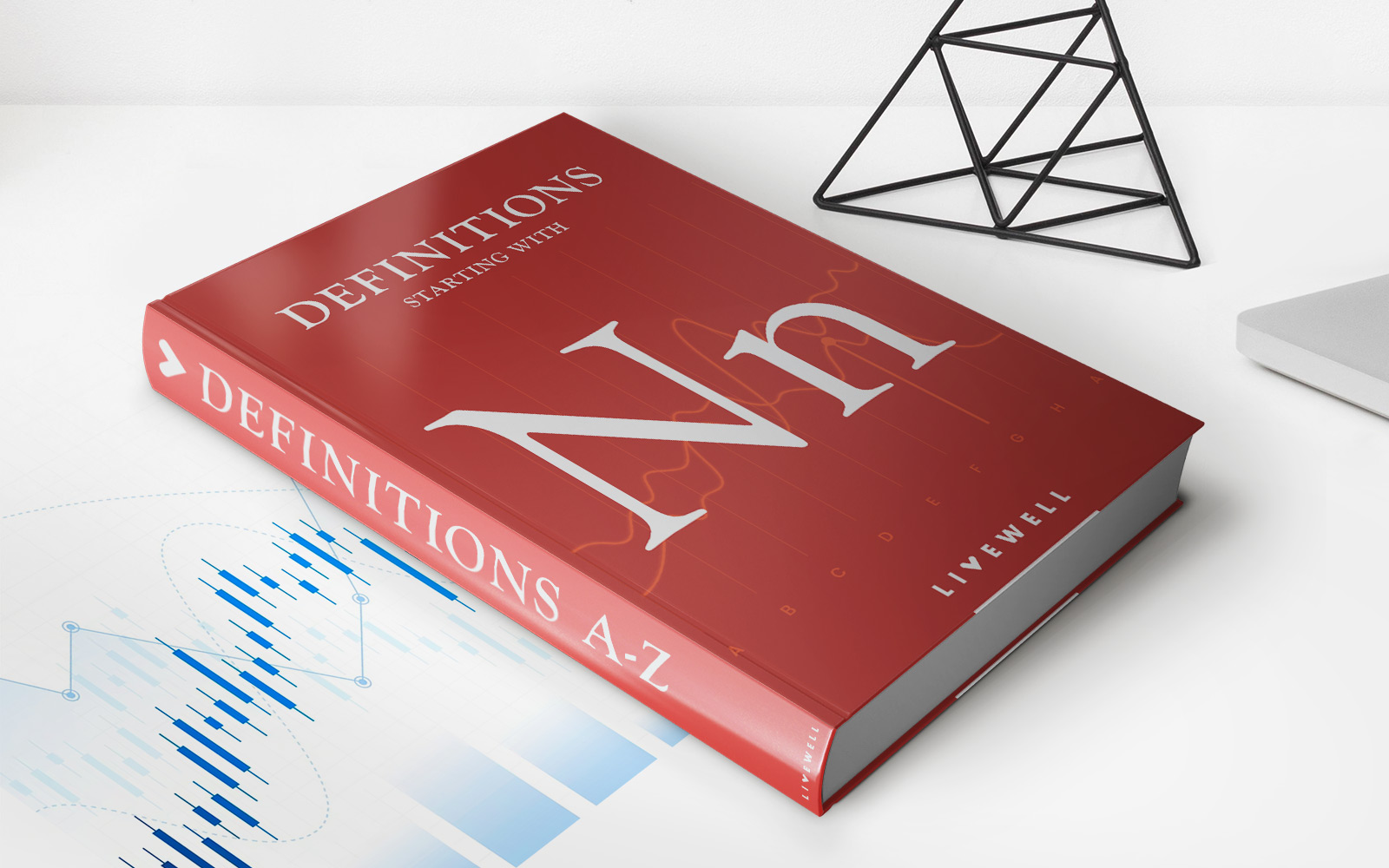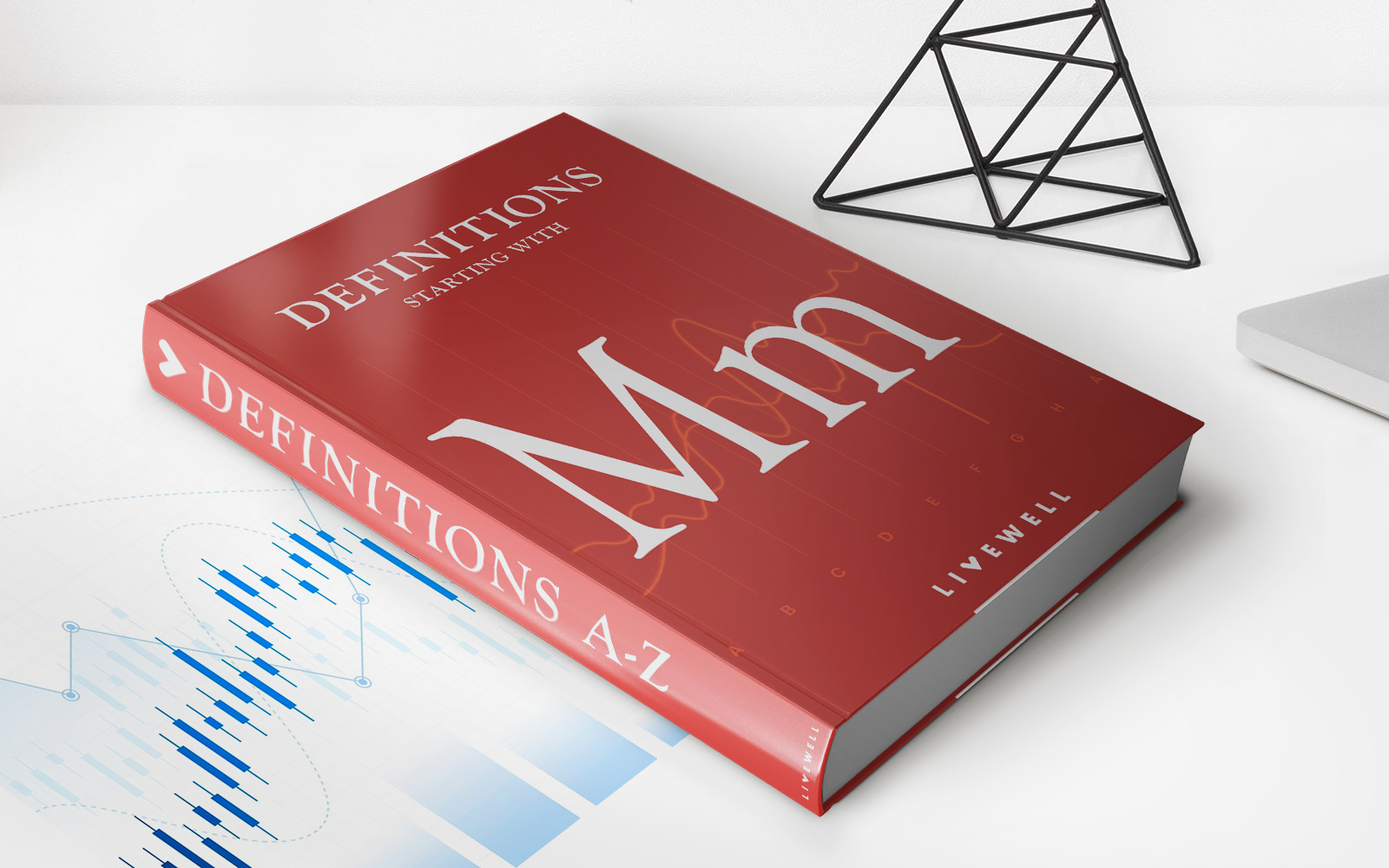

Finance
What Is The Oldest Stock Exchange
Published: January 17, 2024
Learn about the oldest stock exchange in history and its significance in the world of finance. Explore the roots of finance and uncover the secrets behind this timeless institution.
(Many of the links in this article redirect to a specific reviewed product. Your purchase of these products through affiliate links helps to generate commission for LiveWell, at no extra cost. Learn more)
Table of Contents
- Introduction
- Ancient Origins of Stock Exchanges
- The Dutch East India Company and the Birth of the Amsterdam Stock Exchange
- The Role of Merchants and Brokers in Early Stock Exchanges
- Evolution of Stock Exchanges across Europe
- The London Stock Exchange: A Historical Overview
- The New York Stock Exchange: From Humble Beginnings to Global Powerhouse
- Other Historic Stock Exchanges Around the World
- Conclusion
Introduction
Stock exchanges have long played a crucial role in the global economy, facilitating the buying and selling of securities and providing a platform for businesses to raise capital. These financial institutions, often considered the heart of the global financial system, have a rich history that dates back centuries.
In this article, we will explore the origins and evolution of stock exchanges, focusing on some of the oldest and most influential institutions in the world. From the Dutch East India Company to the London Stock Exchange and the New York Stock Exchange, these institutions have shaped the way we invest and trade.
Understanding the historical context surrounding these stock exchanges can provide valuable insights into the development of the modern financial system. We will delve into the early beginnings of stock exchanges, the role of merchants and brokers in their establishment, and the emergence of key players in the financial world.
By examining the captivating stories and milestones of these stock exchanges, we can gain a deeper appreciation for their impact on the global economy and their ongoing relevance in the digital age. From the bustling trading floors of the past to the virtual trading platforms of today, stock exchanges continue to be a vital hub of economic activity.
So join us on this journey through time, as we explore the oldest stock exchanges and the fascinating stories behind their creation and growth. From the ancient origins of stock trading to the modern global marketplace, the history of stock exchanges is a testament to the power of finance in shaping the world we live in.
Ancient Origins of Stock Exchanges
The concept of buying and selling shares of ownership in companies dates back to ancient times. The earliest forms of stock trading can be traced back to the Roman Republic and the ancient city of Rome. Merchants and traders would gather in public meeting places, known as fora, to exchange goods and conduct business transactions.
These gatherings eventually evolved into marketplaces where merchants would not only trade goods but also shares in lucrative ventures. These early stock exchanges, although different in structure from their modern counterparts, laid the foundation for the development of organized financial markets.
Another significant ancient precursor to stock exchanges can be found in medieval Italy. During the Middle Ages, wealthy families and merchants in trading cities such as Venice and Florence engaged in complex financial transactions that involved the buying and selling of bills of exchange. These transactions took place in marketplaces called “burses,” which were essentially proto-stock exchanges.
One of the most prominent examples of an ancient stock exchange can be found in the bustling city of Cairo, Egypt. In the 12th century, a thriving market known as the “The Suk al-Mawazin” was established, where merchants and traders would gather to exchange goods and financial instruments. This marketplace served as a hub for economic activities and is considered one of the earliest known stock exchanges.
While these early exchanges lacked the sophisticated systems and regulations of modern stock markets, they laid the groundwork for the development of formalized stock trading. The exchange of shares and financial instruments in these ancient marketplaces facilitated the growth of commerce and investment.
It is important to note that the concept of stock ownership in ancient times was different from our modern understanding. Shares were often issued for specific ventures or expeditions, and ownership represented a stake in the success or failure of these endeavors. However, the core principles of buying, selling, and trading shares of ownership were present, even in these early forms.
As civilization progressed and economic systems evolved, these ancient origins of stock exchanges would pave the way for the creation of more formalized and regulated financial markets in the centuries to come.
The Dutch East India Company and the Birth of the Amsterdam Stock Exchange
One of the most significant milestones in the history of stock exchanges can be attributed to the establishment of the Amsterdam Stock Exchange in the 17th century, fueled by the unprecedented success of the Dutch East India Company (VOC).
The VOC was the first multinational corporation in the world, formed in 1602 for the purpose of carrying out trade in the East Indies (modern-day Indonesia). To fund its ambitious expeditions and secure investments, the company issued shares to individuals and institutions, effectively creating a market for buying and selling these shares.
This created a need for a centralized marketplace where these shares could be traded freely and transparently. In 1602, the Amsterdam Stock Exchange, known as the Amsterdamse Beurs, was established as the world’s first official stock exchange. It quickly became a hub for international trade and investment.
The Amsterdam Stock Exchange was located in a building called Beurs van Hendrick de Keyser. Merchants and traders would gather in this iconic building to buy and sell shares of the VOC and other companies. The exchange introduced standardized rules and regulations to ensure fair and efficient trading, setting a precedent for stock exchanges around the world.
The success of the Amsterdam Stock Exchange and the VOC’s profitable ventures sparked a wave of investor enthusiasm, attracting individuals and institutions from across Europe. The stock exchange became a symbol of prosperity and innovation, solidifying the Netherlands’ position as a global financial powerhouse.
Not only did the Amsterdam Stock Exchange provide a platform for trading shares, but it also facilitated the development of new financial instruments. Forward contracts, options, and other derivatives were introduced, further expanding the possibilities for investors and traders.
The establishment of the Amsterdam Stock Exchange and the success of the VOC set the stage for the growth of modern stock markets. The principles of transparency, standardized regulations, and centralized trading that emerged during this period continue to shape the functioning of stock exchanges today.
The Amsterdam Stock Exchange remained a dominant force in the financial world for centuries, evolving into what is now known as Euronext Amsterdam. It continues to be a vital part of the global financial system, serving as a market for national and international companies to raise capital and trade their shares.
The Role of Merchants and Brokers in Early Stock Exchanges
In the early days of stock exchanges, the role of merchants and brokers was instrumental in facilitating trading and ensuring the smooth operation of these financial marketplaces.
Merchants played a key role in the formation and functioning of stock exchanges. In many cases, it was merchants who initially recognized the need for a centralized marketplace where shares could be bought and sold. These forward-thinking individuals saw the potential for profit and economic growth by establishing a platform for trading securities.
Merchants were responsible for sourcing and buying shares of companies, often participating in initial public offerings (IPOs) and acquiring shares directly from issuing companies. They would then sell these shares to other investors, often at a premium, thereby creating a secondary market for trading securities.
Brokers emerged as intermediaries between buyers and sellers in the early stock exchanges. These individuals were licensed professionals who acted on behalf of investors, executing orders to buy or sell shares on the trading floor.
Brokers played a crucial role in maintaining order and facilitating transactions. They would gather on the trading floor of the stock exchange, connecting buyers and sellers through their extensive networks and knowledge of market dynamics. Their expertise in navigating the complexities of trading and their ability to negotiate fair prices led to increased trust and liquidity in the market.
The role of brokers expanded beyond simply executing orders. They served as advisors to investors, providing insights and recommendations based on their knowledge of the market and specific companies. Brokers also played a pivotal role in disseminating information about companies and their financial performance, ensuring that investors had access to vital information that could inform their investment decisions.
Through their continuous presence on the trading floor, merchants and brokers formed a vibrant and dynamic ecosystem within stock exchanges. They shaped the culture of these marketplaces, establishing norms and guidelines for fair and ethical trading practices. Their expertise and involvement helped in building trust and confidence among market participants, leading to the growth and development of stock exchanges.
While the role of merchants and brokers has evolved as technology and regulations have advanced, their influence and significance in the early stock exchanges cannot be understated. Their contributions to the establishment and stability of these financial marketplaces laid the foundation for the modern functioning of stock exchanges around the world.
Evolution of Stock Exchanges across Europe
Following the establishment of the Amsterdam Stock Exchange, other European cities and countries began to take notice of the economic benefits and opportunities offered by stock exchanges. This sparked the evolution and spread of these financial institutions across Europe.
One notable example of this evolution is the formation of the London Stock Exchange (LSE). In the late 17th century, the first regulated stock market, known as Jonathan’s Coffee House, emerged in London. It served as a meeting place for merchants, brokers, and investors, providing a space for them to trade shares and discuss business opportunities.
Over time, the popularity of the London stock market grew, and in 1801, the LSE was officially established as a regulated stock exchange. It became a leading international market, attracting companies and investors from around the world. Today, the LSE is one of the largest stock exchanges globally, home to thousands of listed companies.
Similar developments occurred in other European cities. In 1724, the Paris Stock Exchange, known as the Bourse de Paris, was founded. It quickly grew in prominence and facilitated the trading of French government debt and other securities.
Across the continent, cities such as Frankfurt, Vienna, and Madrid established their own stock exchanges, contributing to the growth of financial markets and the development of European economies. These exchanges became essential hubs for capital formation, enabling companies to raise funds from investors and providing a platform for individuals to invest in diverse assets.
With the advent of industrialization in the 19th century, stock exchanges played a vital role in financing the expansion of industries. As more companies sought to raise capital through the issuance of shares, these exchanges provided a regulated environment for investors to buy and sell these securities.
As the European Union (EU) was formed and the European single market emerged, stock exchanges across the continent began to collaborate and integrate. The creation of common financial rules and regulations, such as the Markets in Financial Instruments Directive (MiFID), aimed to harmonize trading practices and increase cross-border investments.
The evolution of stock exchanges in Europe has been marked by technological advancements as well. The rise of electronic trading platforms and computer-based systems revolutionized the way trading takes place. Traders can now connect and trade securities electronically, eliminating the need for physical trading floors.
Today, stock exchanges across Europe continue to evolve and adapt to the changing landscape of global finance. They remain essential institutions for capital formation, price discovery, and investment opportunities, contributing to the stability and growth of European economies.
The London Stock Exchange: A Historical Overview
The London Stock Exchange (LSE) is one of the oldest and most influential stock exchanges in the world, with a rich history that dates back centuries. Its origins can be traced back to the late 17th century when a regulated stock market emerged in the bustling city of London.
The precursor to the LSE was Jonathan’s Coffee House, a popular meeting place for merchants, brokers, and investors. It served as a hub for financial discussions and informal trading of securities. As the demand for a more organized and regulated marketplace grew, the need for a dedicated stock exchange in London became evident.
In 1801, the LSE was officially established as a regulated stock exchange, providing a centralized platform for trading shares. Initially, the stock exchange operated as an open outcry system, where traders would gather on the trading floor to actively buy and sell securities.
Over the years, the LSE evolved and adapted to the changing financial landscape. Technological advancements played a crucial role in shaping its operations. In the 1980s, the exchange introduced electronic trading, which revolutionized the way transactions were conducted. This transition to digital trading laid the groundwork for the modernization and global expansion of the LSE.
The LSE has played a pivotal role in the growth and development of London as a global financial center. The exchange has attracted listings from companies across various sectors and continents, making it an international marketplace for capital formation. It has facilitated the financing of industries ranging from manufacturing to technology and has been a driving force behind economic growth.
In addition to its role in primary market activities, the LSE also plays a crucial role in secondary market trading. Its trading platform, known as the London Stock Exchange Main Market, provides a transparent and efficient marketplace for investors to buy and sell shares.
Throughout its history, the LSE has weathered numerous challenges and uncertainties. Economic crises, regulatory changes, and technological disruptions have necessitated continuous adaptation and innovation. The exchange has proven its resilience and ability to stay ahead of the curve, ensuring that it remains at the forefront of global financial markets.
Today, the LSE is part of a global exchange group, and its reach extends far beyond the United Kingdom. It continues to attract both domestic and international investors, serving as a hub for innovation, investment opportunities, and capital raising.
The London Stock Exchange’s historical legacy, commitment to integrity, and role in shaping the global financial landscape make it an iconic institution in the world of finance. It continues to be a vital component of the international financial system, driving economic growth and providing a platform for businesses and individuals to participate in the global economy.
The New York Stock Exchange: From Humble Beginnings to Global Powerhouse
The New York Stock Exchange (NYSE) is one of the world’s most prominent and influential financial institutions, playing a central role in the global economy. Its history traces back to humble beginnings in the 18th century when a group of traders gathered on Wall Street to conduct business.
In 1792, these traders formalized their activities by signing the Buttonwood Agreement, naming themselves the New York Stock & Exchange Board. This marked the birth of the NYSE, which quickly became a vital marketplace for trading securities in the young United States.
Initially, trading on the NYSE took place under a tree on Wall Street. However, as the number of traders and transactions grew, the need for a dedicated trading venue became evident. In 1817, the NYSE moved into a permanent location, known as the Tontine Coffee House.
Throughout the 19th and 20th centuries, the NYSE experienced significant growth and transformation. A series of mergers, acquisitions, and technological advancements propelled the exchange’s expansion and solidified its position as a global powerhouse.
One pivotal moment in the history of the NYSE occurred in 1863 when it adopted its present name, the New York Stock Exchange. This change reflected the exchange’s ambition to become the leading marketplace for trading securities in the United States, as well as its growing international influence.
As the NYSE grew, so did the regulatory framework around it. The establishment of the Securities and Exchange Commission (SEC) in 1934 further solidified the exchange’s reputation as a well-regulated and transparent marketplace, attracting investors and companies from around the world.
Technological advancements have been instrumental in the evolution of the NYSE. In the late 20th century, the exchange transitioned from open outcry trading to electronic trading systems. This shift allowed for faster and more efficient transactions, accommodating the growing volume and complexity of global financial markets.
Today, the NYSE is part of the Intercontinental Exchange (ICE) and continues to be a leading global marketplace for publicly traded companies. It offers a platform for businesses to raise capital and investors to buy and sell shares.
The NYSE’s global influence is evident in its broad geographic reach. It attracts companies from various industries and countries, and its listings include some of the world’s largest and most well-known corporations. It has become a symbol of the strength and vibrancy of the U.S. economy.
Beyond its role as a trading platform, the NYSE serves as a symbol of stability and trust in the financial markets. It has weathered numerous economic downturns and financial crises, adapting and innovating to maintain its position as a trusted marketplace for investors.
The New York Stock Exchange’s journey from humble beginnings to becoming a global powerhouse is a testament to the power of innovation, regulation, and the vision of its participants. Today, it stands as one of the most influential financial institutions in the world, shaping the global economy and providing endless opportunities for investors and companies alike.
Other Historic Stock Exchanges Around the World
While the Amsterdam Stock Exchange, London Stock Exchange, and New York Stock Exchange hold significant prominence in the global financial landscape, there are several other historic stock exchanges around the world that have played vital roles in shaping regional economies and contributing to the growth of global capital markets.
One noteworthy example is the Tokyo Stock Exchange (TSE), which was established in 1878. The TSE has played a central role in Japan’s economic development and has been a key driver of the country’s modern industrialization. Today, the TSE is one of the largest stock exchanges in the world.
In Asia, the Shanghai Stock Exchange (SSE) stands out as one of the oldest stock exchanges in the region. It was founded in 1866 and has played a pivotal role in China’s economic growth. With the opening up of China’s economy in recent decades, the SSE has experienced significant growth, attracting both domestic and international investors.
Another historic stock exchange is the Bombay Stock Exchange (BSE) in India, which was established in 1875. The BSE has played a crucial role in facilitating capital formation and investment opportunities in one of the world’s fastest-growing economies.
Moving to the continent of Africa, the Johannesburg Stock Exchange (JSE) is one of the oldest and largest stock exchanges on the continent. Founded in 1887, it has been a key player in South Africa’s economic development and has been instrumental in attracting foreign investment to the region.
Europe is home to several other historic stock exchanges, aside from the London Stock Exchange. The Frankfurt Stock Exchange, established in 1585, is the world’s tenth-largest stock exchange and plays a pivotal role in Germany’s economy. The Paris Stock Exchange (Bourse de Paris), founded in 1724, has been a cornerstone of France’s financial system and has supported the growth of many domestic and international companies.
In the Americas, the São Paulo Stock Exchange (B3) in Brazil has a rich history dating back to the late 19th century. The B3 is one of the largest stock exchanges in Latin America and has played a significant role in Brazil’s economic development.
These historic stock exchanges, alongside others not mentioned here, have contributed to the globalization of capital markets and the integration of economies worldwide. They have provided platforms for companies to raise capital, enabled investors to participate in the growth of various industries, and supported economic development at both regional and global levels.
As financial markets continue to evolve, these historic stock exchanges, with their long-standing legacies, are adapting to new technologies and regulations to remain relevant and continue playing crucial roles in the functioning of the global financial system.
Conclusion
The history of stock exchanges is a testament to the power of finance in shaping the global economy. From the ancient origins of stock trading to the modern-day bustling marketplaces, these institutions have played a crucial role in facilitating the buying and selling of securities and providing opportunities for businesses to raise capital.
The Amsterdam Stock Exchange, with its birth tied to the Dutch East India Company, marked the beginning of formalized stock exchanges. It introduced standardized rules and regulations and became a model for stock markets around the world.
The London Stock Exchange emerged as a powerhouse, driving the growth of the British economy and becoming the symbol of London as a financial center. Its historical journey reflects the evolution of global financial markets.
The New York Stock Exchange, born out of humble beginnings, has grown into a global powerhouse and serves as the backbone of the United States’ financial system. It has weathered countless challenges and demonstrated its ability to adapt to changing times.
Other historic stock exchanges, such as the Tokyo Stock Exchange, Shanghai Stock Exchange, and Bombay Stock Exchange, have made significant contributions to their respective regions’ economic development and have become vital engines for growth.
Collectively, these historic stock exchanges, along with countless others around the world, have fostered the growth of global capital markets, driving economic progress and facilitating investment opportunities for individuals and businesses alike.
As we move forward, stock exchanges continue to evolve, embracing new technologies, regulations, and market dynamics. The need for transparency, fair trading practices, and efficient marketplace operations remains fundamental to their success.
The legacy of these historic stock exchanges serves as a reminder of the power of finance to shape societies and drive economic progress. They are not merely marketplaces for buying and selling securities but vibrant centers that fuel economic growth, connect investors with opportunities, and contribute to the overall stability and development of the global financial system.
As we appreciate the rich history and profound impact of these institutions, we can look forward to the future, where stock exchanges will continue to play a vital role in shaping the world’s economies, facilitating innovation, and providing a platform for businesses and individuals to participate in the dynamic landscape of global finance.














